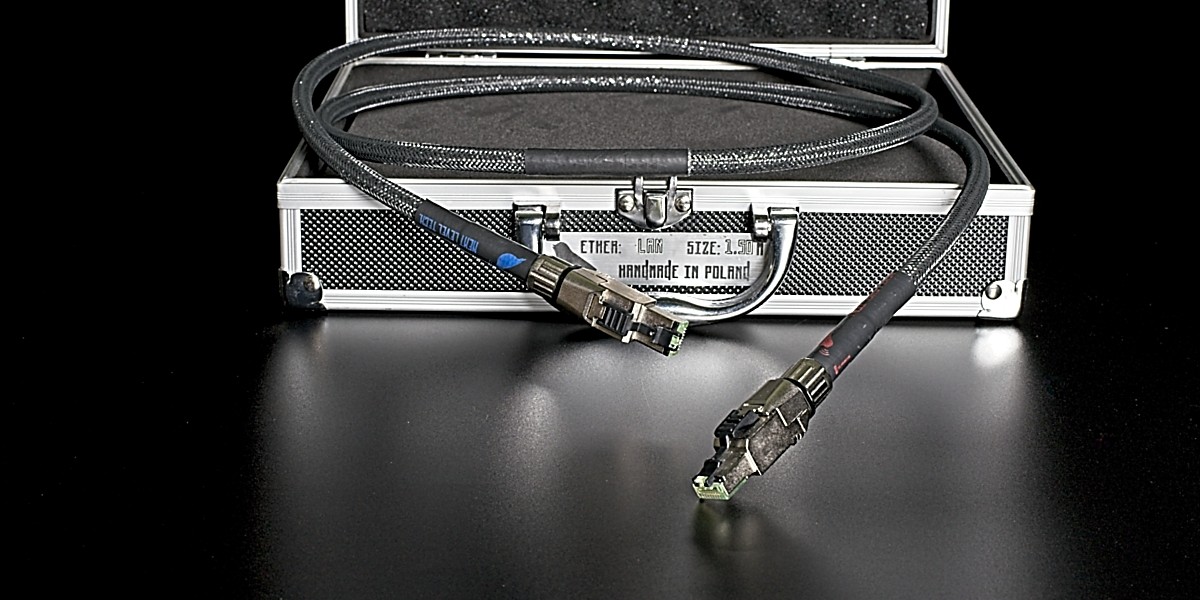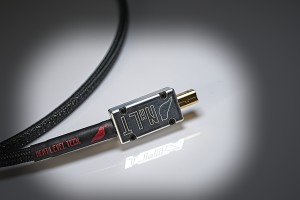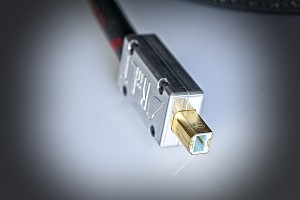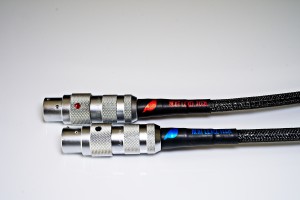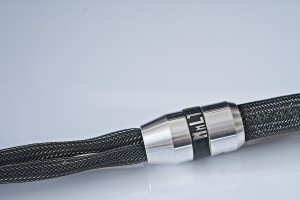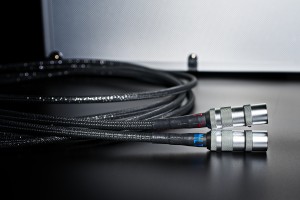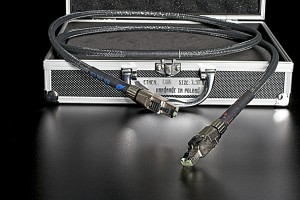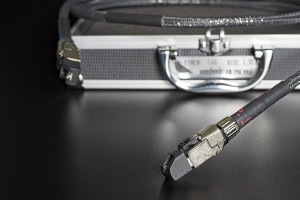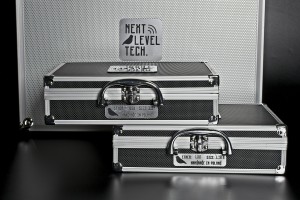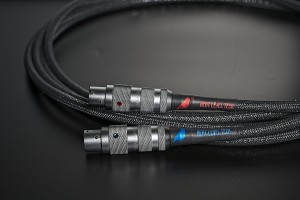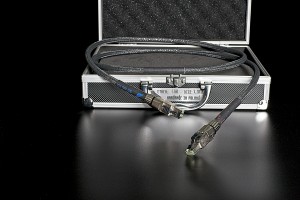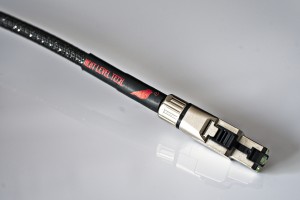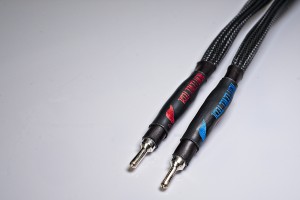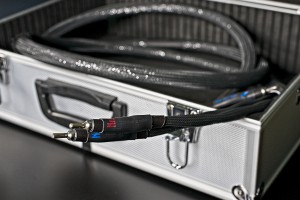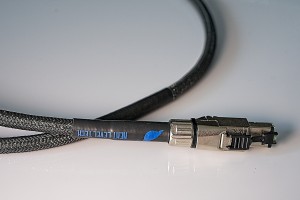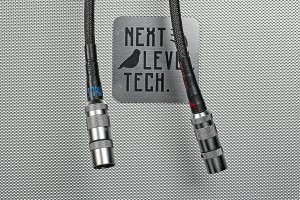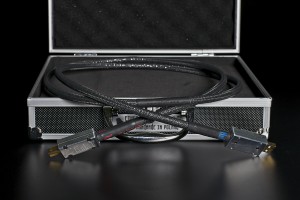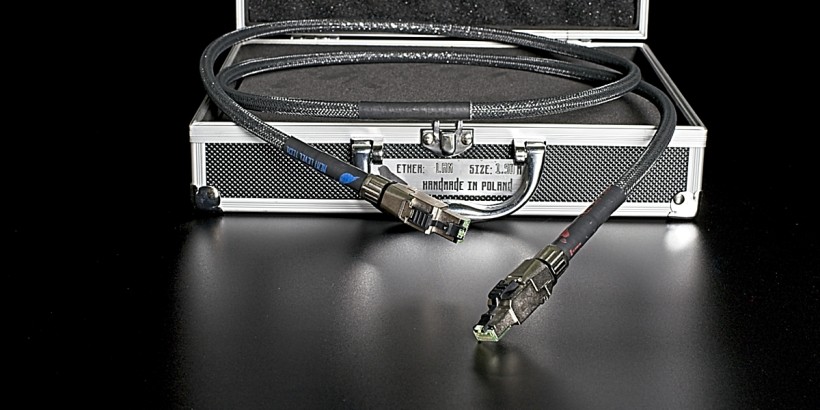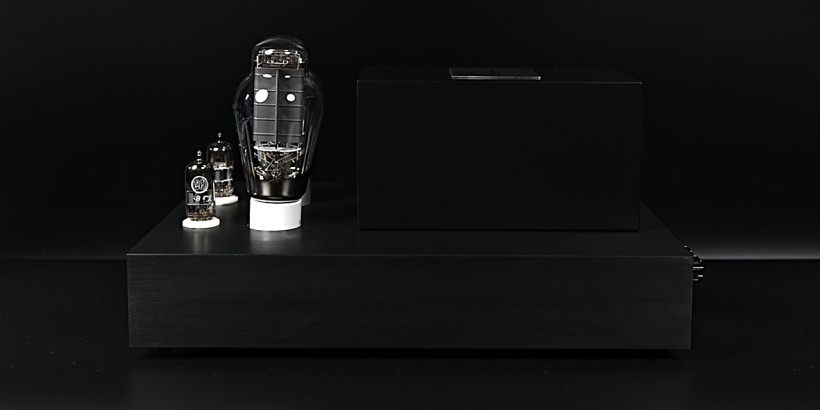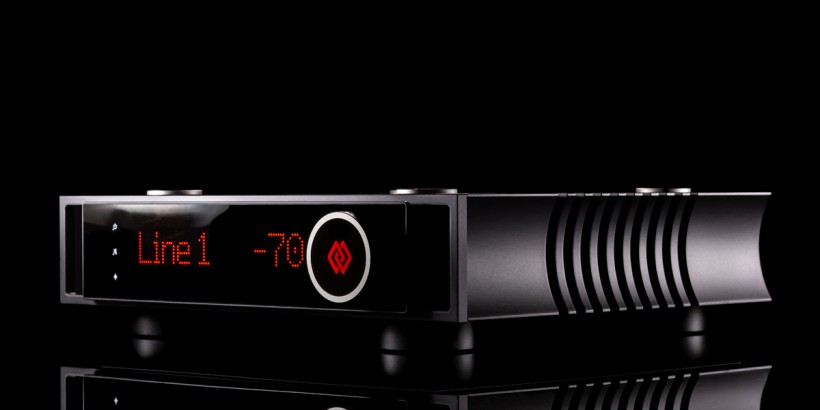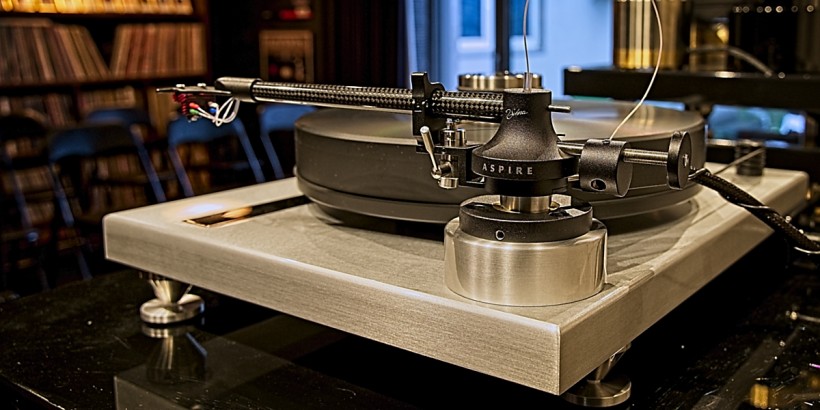The experience with the Flame speaker and interconnect cables from this Polish manufacturer made me curious about the latest, top model, Ether. Instead of one type, this time I got the whole set, including speaker, balanced interconnect, USB, and LAN cables. Therefore, I can invite you to the world of the top cables as imagined by Mr. Robert Słowiński. Here comes a review of the Next Level Tech Ether set.
Introduction
For those of you who haven’t read my review of Next Level Tech (or NxLT) Flame interconnect and speaker cables, let me point you to them, as that’s where you will find more information about the manufacturer that I won’t repeat here. You can find them HERE, and HERE. If you prefer a short version, here it comes. It is a young brand that was established in 2021. From the start, they’d focused their efforts mostly on analog interconnects and prepared three models in both balanced and unbalanced varieties. Later, the range was expanded, and today it also includes speaker cables, digital interconnects, USB, and LAN cables.
The names of the series were based on elements, namely: Air, Water, and Flame, with the latter being the top-of-the-line still when I reviewed them (although Mr. Słowinski already back then indicated that a new top-of-the-line was coming). What has changed since then is that Water and Air are not offered anymore, which leaves customers with two choices – the excellent Flame, and the new top model, Ether. To be honest, the designer told me beforehand that (apart from the latter being superior in absolute terms) these two differ quite significantly in terms of sonic character. I truly liked the Flame, so I wondered whether the Ether, even if superior in terms of sound quality, would delight me even more. 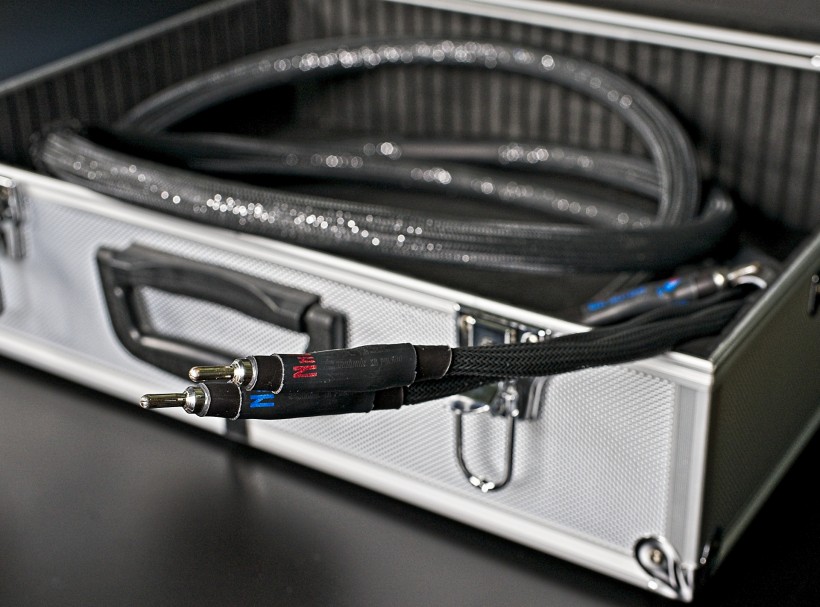
Design and Features
The cables come double-packed. There is the outside carton box, and inside I found familiar cases with the brand’s logo on it – large for speaker cables and analog interconnects, much smaller ones for USB and LAN. The logo is a nightingale – for those who haven’t read the previous reviews, let me explain that the Polish word for the bird is „słowik” and the owner and chief designer is Słowiński, and I bet both share the same etymology. The cases not only look good but also provide effective protection for their content during transport/shipment. Inside, apart from cables, one finds a short „manual” as well as a document stating the model, its length, and termination (in case of SC and IC).
One can order NEXT LEVEL TECH ETHER cables in various lengths. According to the pricelist, standard lengths for IC start from 0,75cm, as they do for USB and LAN, while SC starts from 1,5m. Standard lengths go up to 2,5 m in 0,25m increments for all of them. Other lengths are available upon order. What has changed compared to the Flame is that the Ether (it goes for all of them) cables are relatively flexible, yet they share the same build and finish quality. They all feature a nice, but plain black sleeving and no fancy, mysterious „boxes” on them. They are all directional. In some cases (USB or XLR), it’s the connectors that will tell you how to connect them, as for the others, you should look for the nightingale (or the writing) on the jacket – its tail and beak show you the right way to connect any Next Level Tech cable.
The Ether XLR analog interconnect, as well as all other tested models, uses custom-made Cold Drawn Red Copper O.F.C. (Oxygen-Free Copper) conductors that undergo the cryogenic treatment twice (the process lasts up to 10 days). There are two runs of conductor per pin. The insulation, which is laser-cut with high precision, is made of foamed Polypropylene (with minimal contact with the conductor). There are 4 or 5 (depending on the cable) shielding layers braided along the entire length of the conductor. The final layer of shielding is applied and braided according to proprietary technology with tension optimized for the best sound quality. The manufacturer compares the process to tuning a (string) instrument – one adjusts (string’s) tension/length until it hits the right tone. For the balanced analog interconnect manufacturer uses Oyaide Focus 1 XLR plugs. 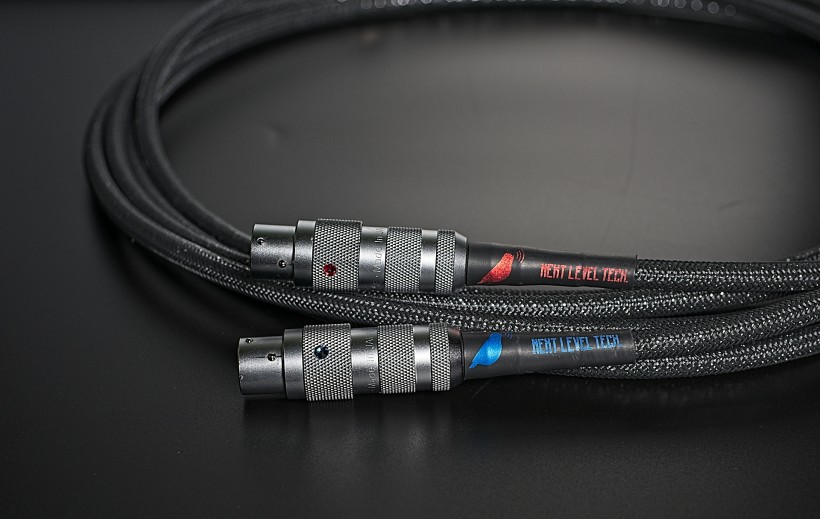 The Ether SPKR cable features the same custom-made Cold Drawn Red Copper O.F.C. conductor that also undergoes cryogenic treatment twice. There are four separate runs per pin, and each consists of twenty thin strands, individually placed in a dielectric. Also in this case, the insulation, which is laser-cut with high precision, is made of foamed Polypropylene (with minimal contact with the conductor). In this model, there are as many as 9 layers of shielding braided along the entire length of the conductor. The final shield is applied and braided according to NxLT’s proprietary technology and with tension optimized for the best sound quality. The Ether speaker cables are terminated with either Oyaide SPSL spades or Oyaide SRBN bananas. It is possible to order a bi-wire version as well.
The Ether SPKR cable features the same custom-made Cold Drawn Red Copper O.F.C. conductor that also undergoes cryogenic treatment twice. There are four separate runs per pin, and each consists of twenty thin strands, individually placed in a dielectric. Also in this case, the insulation, which is laser-cut with high precision, is made of foamed Polypropylene (with minimal contact with the conductor). In this model, there are as many as 9 layers of shielding braided along the entire length of the conductor. The final shield is applied and braided according to NxLT’s proprietary technology and with tension optimized for the best sound quality. The Ether speaker cables are terminated with either Oyaide SPSL spades or Oyaide SRBN bananas. It is possible to order a bi-wire version as well.
Both the Ether USB and LAN cables feature the very same conductor, shielding (5 layers), insulation, and final shielding layer’s ‘tuning’ as the analog cables. The USB model uses connectors made of high-grade aluminum, designed to minimize vibrations that disrupt audio signal integrity. The damping filler eliminates micro-resonances. The contact areas are made of high-purity copper that is also gold-plated. The Ether LAN cable features Telegartner Cat. 8.1 connectors and supports speeds up to 10 Gbit/s. Last, but not least, according to the manufacturer, all the Next Level Tech cables are being broken-in already in the factory, but (and that’s the important part) they need 72 hours plugged in and playing in the system before they achieve their optimal performance.
Sound
As I’ve mentioned numerous times before, when it comes to audio cables, I like (even prefer) to test the whole sets from one manufacturer. There are several reasons behind it. First of all, that is how (in most cases) manufacturers develop and test them. Even if making one model at a time, when adding the next one to the line, they use the already existing ones in the development process. Secondly, which is a direct result of the former, there is likely a synergy effect when using several cables from the same manufacturer, and that means that together they often offer more than individual models.
Thirdly, the whole set is what best reflects the designer’s idea for the sound. Let’s be honest, there is no such thing as a perfect signal conductor (cable). No matter the price, they all change the signal to some degree, thus influencing what we ultimately hear from the speakers. What designers offer us, particularly when it comes to top models/lines, is what they believe or what they envision is the best possible sound (they could offer). Therefore, testing a set truly reveals the designer’s intention or idea for the ‘best performance’. One last advantage of testing the whole set – the designer can’t say that it was other cables in the system that limited the performance of his/her ‘beloved child’.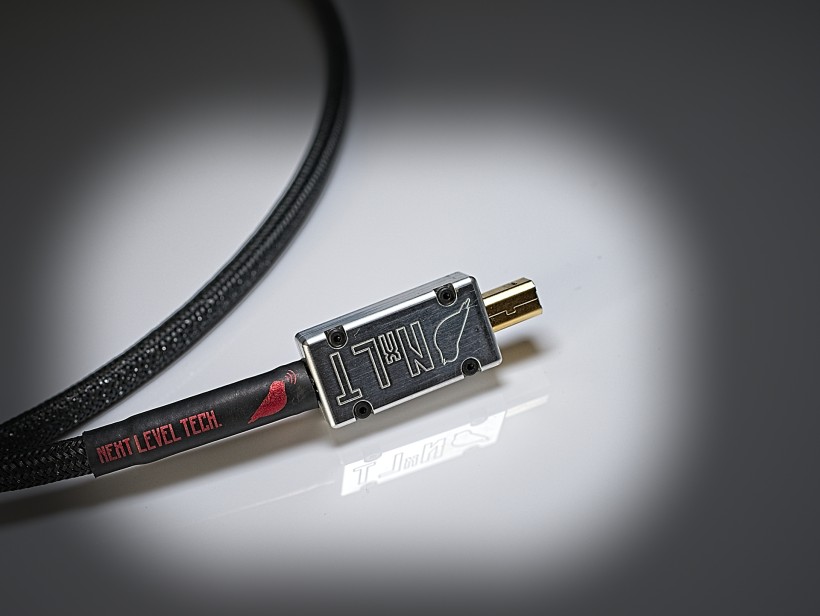 Usually, when I test such sets, I add cables to the system one by one to better assess the influence of each of them. The ‘problem’ with NxLT is that their products have to be plugged in for (at least) 72 hours to offer optimal performance. Following such a procedure with four models at my disposal would take me weeks. I just didn’t have that much time on my hands. So I plugged all the cables in, Ether LAN between the Silent Angel switch and my Roon server, Ether USB between the JCAT USB Card XE with JCAT MASTER OCXO CLOCK Upgrade and LampizatOr Pacific D/A Converter. I connected the latter using NxTL Ether XLR IC with GrandiNote Shinai Class A integrated amplifier, which drove GrandiNote MACH4 speakers via the Ether Speaker Cables.
Usually, when I test such sets, I add cables to the system one by one to better assess the influence of each of them. The ‘problem’ with NxLT is that their products have to be plugged in for (at least) 72 hours to offer optimal performance. Following such a procedure with four models at my disposal would take me weeks. I just didn’t have that much time on my hands. So I plugged all the cables in, Ether LAN between the Silent Angel switch and my Roon server, Ether USB between the JCAT USB Card XE with JCAT MASTER OCXO CLOCK Upgrade and LampizatOr Pacific D/A Converter. I connected the latter using NxTL Ether XLR IC with GrandiNote Shinai Class A integrated amplifier, which drove GrandiNote MACH4 speakers via the Ether Speaker Cables.
I started listening to the setup right away, but held off till after the recommended 72 hours with actual assessment. To be clear, NxLT Ether set sounds really good from the get-go as every cable undergoes a factory break-in, but still, it does get gradually better and better for the first few days. After 3, maybe 4 days, I stopped noticing further improvement, which, by the way, was mostly about further refinement and not some huge changes, but at this level of performance, the devil is in the details, as you surely know. Before ending the test, I got to the part where I replaced Next Level Tech Ether cables with my own references one by one. The testing sequence was thus reversed this time, but it was the only sensible way to do it. I first got back to my speaker cables, then IC, USB, and finally also LAN, and the first two clearly made more of a difference. First things first, though.
Introducing the whole set at once to the otherwise very familiar system was clearly noticeable right from the start. Even more so, as for a few days before I’d used also (my own) Hijiri Million Kiwami RCA IC and (review pending) speaker cables from the same line developed by Mr. Kazuo Kiuchi. I mention it also because when starting to develop his own cables, Mr. Słowinski used Hijiri Million as his reference. The Japanese set offers incredibly rich, even lush, slightly warm, highly resolving, and beautifully musical performance, combined with outstanding flow, and is one of the best cables, in my opinion, one can buy if incredibly musical and natural-sounding performance is what one is after. 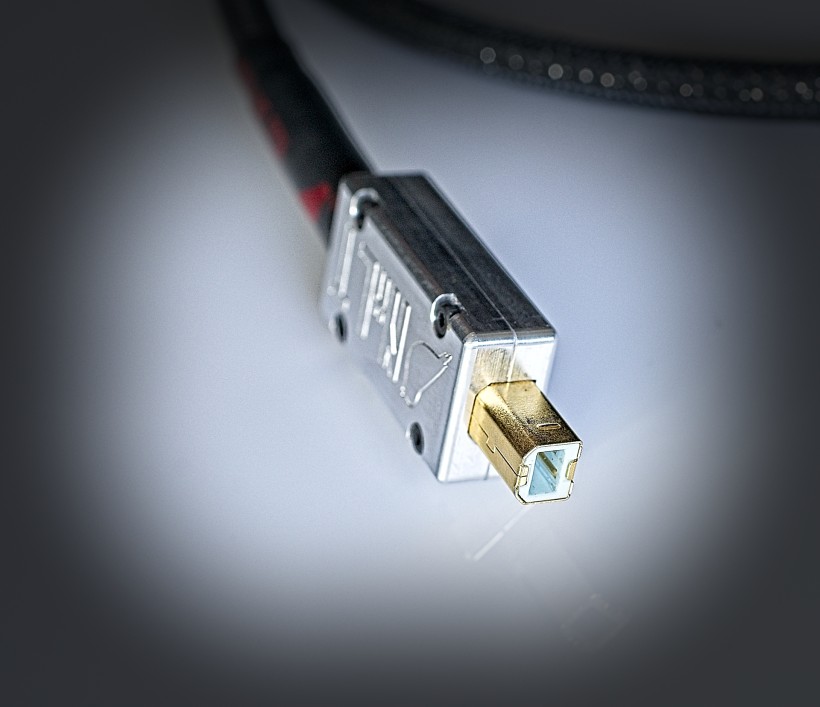 As a result of those qualities, these Japanese cables allow you to enjoy music, even if less-than-perfectly recorded, for long hours without any signs of fatigue. In other words, it is just a pure pleasure to listen to the music with them. The Hijiri Million set delivers an abundance of information on any track one plays, but it does is quite discreetly, so to speak. By that I mean, one doesn’t really notice how rich in information the presentation with it is, until one really tries to study this aspect of presentation, as the details and subtleties rarely stand out. In this case, it is more about all those tiny, little pieces of information coming smoothly together, and ultimately delivering super-coherent, amazingly musical, yet high-end performance.
As a result of those qualities, these Japanese cables allow you to enjoy music, even if less-than-perfectly recorded, for long hours without any signs of fatigue. In other words, it is just a pure pleasure to listen to the music with them. The Hijiri Million set delivers an abundance of information on any track one plays, but it does is quite discreetly, so to speak. By that I mean, one doesn’t really notice how rich in information the presentation with it is, until one really tries to study this aspect of presentation, as the details and subtleties rarely stand out. In this case, it is more about all those tiny, little pieces of information coming smoothly together, and ultimately delivering super-coherent, amazingly musical, yet high-end performance.
Next Level Tech Ether set presents quite a different approach in this regard, or at least the perception of its performance is quite different, unlike the Flame’s, which, in general terms, sounds a lot like Hijiri Million. In hindsight, Flame seems to be NxLT’s top achievement when using these Japanese components as reference, and with Ether, Mr. Słowinski chose a somewhat different direction. It is the transparency, dynamics, and how resolving and energetic the presentation is that sets the pace from the start.
Especially at first, the presentation seems less rich, definitely not as lush, not quite as smooth, but rather a touch more analytical, going deeper into the fabric of the recording. In most cases, I am not a big fan of this feature as it usually means a bit exaggerated and thus (to my ears) ‘unnatural’ transparency, and directing listeners’ attention to details which have (a negative in my view) effect on the coherence and flow of music. The NxLT ETHER is yet something else, which indicated already at this stage of assessment that it may belong to a rare species of audio cables that deliver beautifully natural sound and yet at the same time very neutral. In such cases, the key challenge is to preserve the optimal balance between the natural warmth of the instruments and vocals and conveying every note with precision, transparency, and clarity. That (and much more) is what the Ether set offers. Realizing it is a great start to the assessment, although on the other hand, it could also be enough to end it here and now. But let’s keep digging.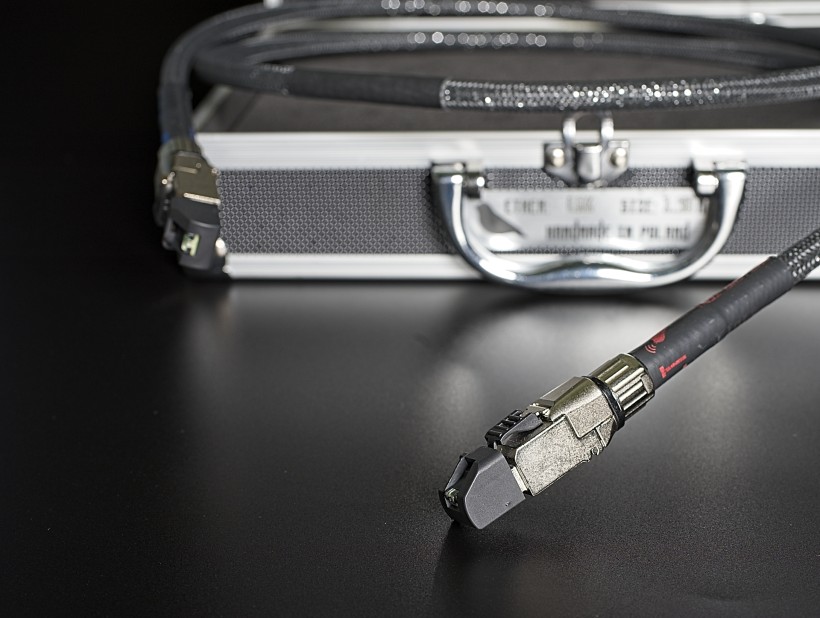 With the tested set, the presentation is very resolving, rich in details and subtleties that are a bit more prominent than with the aforementioned Flame or Hijiri Million. Ether is also incredibly transparent, and the purity of the presentation, provided that a recording one listens to allows it, is remarkable, thus making the presentation truly revealing. The top NxLT’s line also offers high precision in terms of spatial placement of all the elements of the recording, and outstanding imaging. That latter is based on drawing contours with a fine line rather than palpable 3D body, and yet each of them, each instrument blends smoothly into the whole sound stage, and that’s a rare achievement offered usually only by significantly more expensive competitors.
With the tested set, the presentation is very resolving, rich in details and subtleties that are a bit more prominent than with the aforementioned Flame or Hijiri Million. Ether is also incredibly transparent, and the purity of the presentation, provided that a recording one listens to allows it, is remarkable, thus making the presentation truly revealing. The top NxLT’s line also offers high precision in terms of spatial placement of all the elements of the recording, and outstanding imaging. That latter is based on drawing contours with a fine line rather than palpable 3D body, and yet each of them, each instrument blends smoothly into the whole sound stage, and that’s a rare achievement offered usually only by significantly more expensive competitors.
All these elements of the presentation offered by the Next Level Tech Ether set allow me to take a closer look at the deepest layers of every recording and performance, but, importantly (!), the in-depth analyses, while (let me repeat once more) more prominent than with the previous top line Flow, aren’t forced on me. I can still choose to focus on the music as a whole and enjoy every tiny little detail of the performance without looking at it with a magnifying glass – does it make sense for you? In simple terms, all the information from the recording is there for the taking and even studying it, but it is the listeners who decide whether they actually want to go that deep and into the technical aspects of the recording, release, or performance, or forget about it and simply enjoy the music. The Ether does both equally well.
That’s what allows me to follow the mastery of Michael Hedges or Paco de Lucia on their guitars. Two completely different styles, but the sound of their guitars is deep, in both cases with proper balance between fast string picks or chords and resonant wood. With Miles Davis or Tomasz Stanko playing their trumpets for me, I can hear not just the sounds and reverb but the non-musical elements – breathing, working valves, movements around the microphone, and so on. All these elements come together to offer me a unique, very live-like experience. It becomes more than just listening to the recording, as it draws me in, and it inspires emotions in a very convincing and natural way. 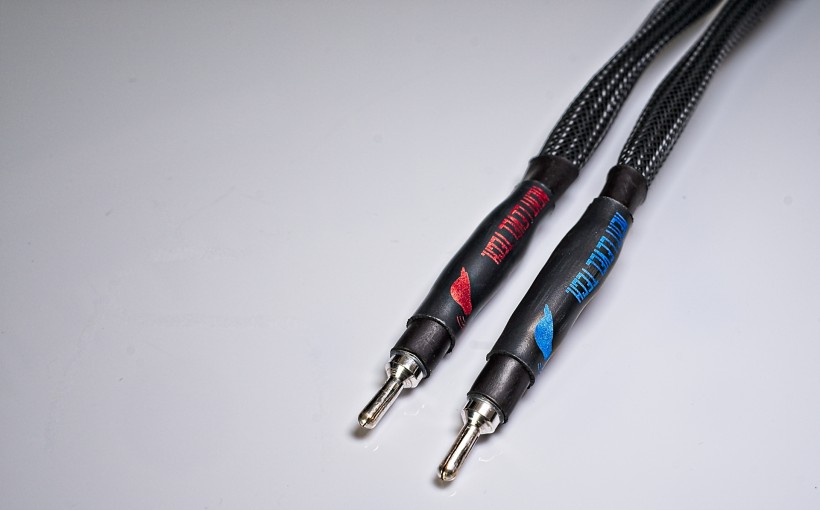 Dozens of live recordings show me that spatial aspects are another huge advantage of these cables. The sound stage’s width is truly impressive, and the depth is great too, even if in this regard it doesn’t quite match the Soyaton Benchmark MK2 (but no cable I know does). There is good separation between large phantom images; each of them is stably anchored in its place, and all the acoustic cues, such as long, full decay or reverb, add to the realism of the presentation. Let’s add to it the precise timing, proper pace and rhythm, drive, power, and energy, and each such well-recorded concert comes to life.
Dozens of live recordings show me that spatial aspects are another huge advantage of these cables. The sound stage’s width is truly impressive, and the depth is great too, even if in this regard it doesn’t quite match the Soyaton Benchmark MK2 (but no cable I know does). There is good separation between large phantom images; each of them is stably anchored in its place, and all the acoustic cues, such as long, full decay or reverb, add to the realism of the presentation. Let’s add to it the precise timing, proper pace and rhythm, drive, power, and energy, and each such well-recorded concert comes to life.
Now, what it also means is that the Ether line is less forgiving than Flame or Hijiri, thus reminding me more of Bastanis Imperial interconnects. It differentiates recordings really well and allows one to truly appreciate the gems of one’s recording collection. With them, you get it all: an immersive experience and fantastic sound quality. Yet, when it comes to the tracks or albums that were recorded and/or released without ultimate sound quality in mind, NxLT Ether lets you clearly know about it. That’s another feature that distinguishes it from the Flow. The latter is definitely more forgiving, more about listening pleasure, even when playing some non-audiophile-quality releases.
At some point, I realized that listening to my setup using the Ether set is a particularly interesting experience, as what it offers is the truth, the whole truth, and nothing but the truth about every recording, and yet I liked it! Some other super-resolving, super-transparent, highly-detailed audiophile components did the same thing before for me, but in many cases, the final result could be sort of dry, lifeless, definitely not natural, very unlike what I remembered from live performances, and those were and are my references. 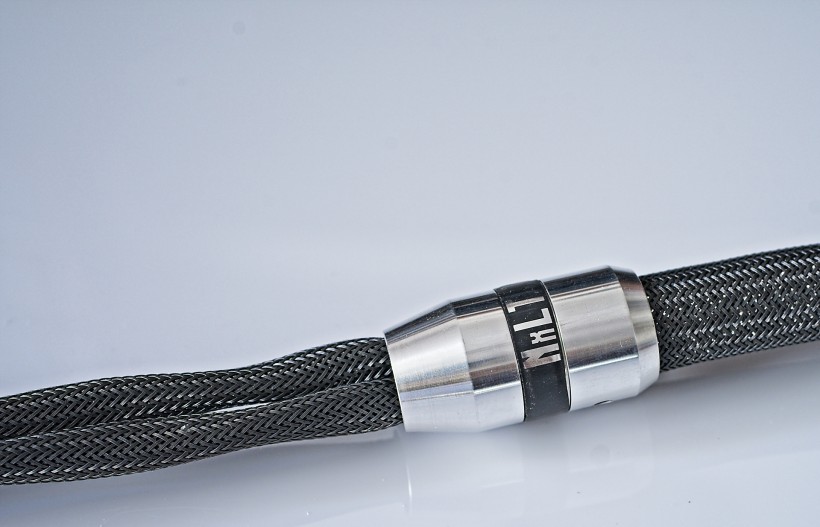 It seems to me that with Ether, Mr. Słowiński achieved an optimal balance between all the elements that actually have to come together for audio components to be faithful to the high fidelity (to the recording) idea on one hand, and on the other, still sound natural. To ‘cover’ not only an (almost) perfect reproduction of the sound recorded, mixed, and mastered in a studio, but also convey the music and emotions that it expresses. After all, music is a way to express emotions, mood, it carries a certain message, and without those elements properly delivered, it doesn’t really come ‘alive’. With Next Level Tech Ether set, all the pieces of the puzzle ultimately come together to offer a smooth, coherent, organic whole with good flow.
It seems to me that with Ether, Mr. Słowiński achieved an optimal balance between all the elements that actually have to come together for audio components to be faithful to the high fidelity (to the recording) idea on one hand, and on the other, still sound natural. To ‘cover’ not only an (almost) perfect reproduction of the sound recorded, mixed, and mastered in a studio, but also convey the music and emotions that it expresses. After all, music is a way to express emotions, mood, it carries a certain message, and without those elements properly delivered, it doesn’t really come ‘alive’. With Next Level Tech Ether set, all the pieces of the puzzle ultimately come together to offer a smooth, coherent, organic whole with good flow.
The first ‘step back’, meaning switching to one of my references, Soyaton Benchmark MK2 speaker cables, confirms what I’ve expected. The tonal balance of my cable is set a bit higher. As a result, the upper part of the range is a little bit more open, more vibrant, and there is even more air in it. Also, the size of the sound stage is greater, particularly in terms of its depth. As already mentioned before, I am yet to hear any cable at any price that beats Benchmark in this regard, so no surprises here.
The lower part of the range is where the Ether takes over the lead – the lower midrange and the lower bass in particular. Both are a bit richer, carry more weight and energy, thus delivering a stronger punch. As a result, on the one hand, vocals and instruments such as acoustic guitar, or saxophone (and many more), seem more palpable, more present. On the other hand, when needed, the lowest notes with Ether have more authority, and yet are as tight as with Soyaton. It comes in handy when one listens to blues or rock (although remember that the tested cables are less forgiving when it comes to sound quality), and the bass lines need to be powerful and maintain proper timing and pace at the same time. More authority, more thunderous energy prove useful when one listens to some monumental orchestral music or some movie scores. 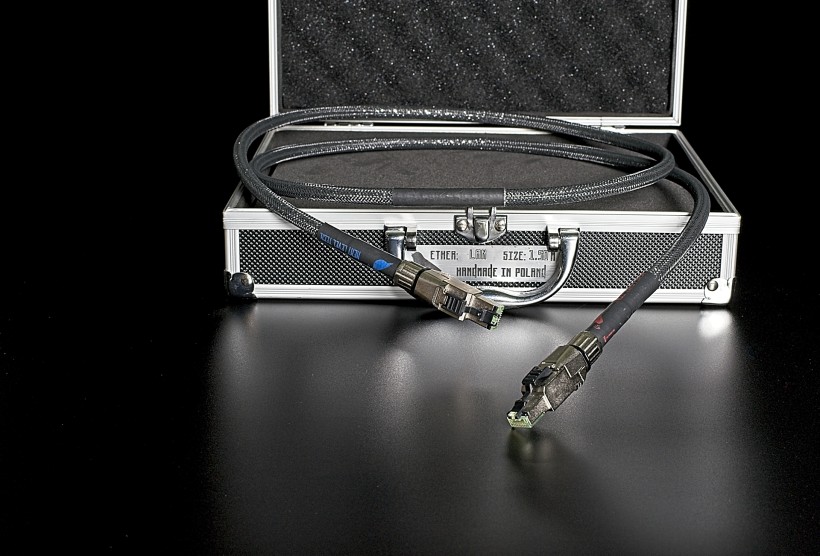 The differences are actually not that big, so long story short, it’s not really about one of these two cables being clearly superior to the other. Both will find their advocates based on individual tastes and the setups. If you need a little more authority, more slam, more ‘presence’, the NxLT Ether will most likely be your choice. If the upper part of the band needs a little more air, more openness, or if your priority is the spatial aspect of the presentation, Soyaton’s cables may better suit your needs. From my perspective, both are excellent – the Ether speaker cables (based on my tastes) better fit my GrandiNote MACH4 speakers, while Benchmark MK2, especially with GrandiNote Shinai Class A driving my other speakers, Ubiq Audio Model One, tad better completes this setup.
The differences are actually not that big, so long story short, it’s not really about one of these two cables being clearly superior to the other. Both will find their advocates based on individual tastes and the setups. If you need a little more authority, more slam, more ‘presence’, the NxLT Ether will most likely be your choice. If the upper part of the band needs a little more air, more openness, or if your priority is the spatial aspect of the presentation, Soyaton’s cables may better suit your needs. From my perspective, both are excellent – the Ether speaker cables (based on my tastes) better fit my GrandiNote MACH4 speakers, while Benchmark MK2, especially with GrandiNote Shinai Class A driving my other speakers, Ubiq Audio Model One, tad better completes this setup.
Next up was the XLR interconnect connecting LampizatOr Poseidon with Shinai. I replace the tested cable with my reference one, which is the KBL Sound Himalaya 2. In direct comparison, Ether’s bass notes seem a bit tighter and faster, while Himalaya 2 is even richer and digs deeper into the lowest part of the range. Throughout the whole range, NxLT’s interconnect confirms the outstanding transparency and clarity, while KBL Sound focuses a bit more on the richness and fullness of every note. The treble with Himalaya 2 is a touch sweeter and smoother, with Ether it seems a bit brighter (not bright, though!), and with some sounds (rightfully so) more piercing. Both offer highly resolving, refined, quite revealing performances, with the Ether proving again to be a bit more on the analytical side.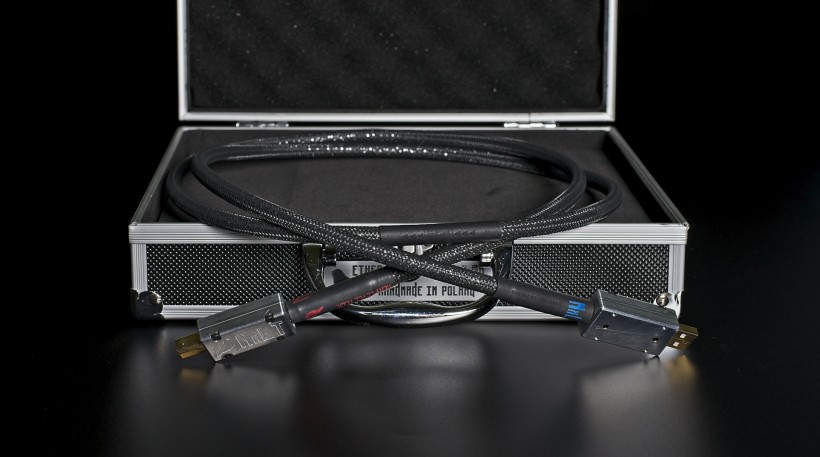 When it comes to switching back to my everyday USB cable, DL Custom Audio Expression Emerald, the difference between these two cables is, on the one side, very clear, and on the other, it doesn’t have that much influence on the sound as either the interconnects or speaker cables. My Emerald is a super-musical, rich, smooth, super-non-digital sounding USB cable. That’s what I love about it. It is not the best cable in the world, but it does fit really well into my setup and my expectations. Ether USB, the same as all other cables from this line, focuses more on precision, transparency, dynamics, and clarity. So as a result, what I can hear is a touch clearer, more distinct when it comes to details, but as a result, it seems a bit brighter. These tiny little differences, but they are there. It is not about one of the cables being worse or better than the other; they are just different, and if your system is transparent enough, choosing between them should be simple.
When it comes to switching back to my everyday USB cable, DL Custom Audio Expression Emerald, the difference between these two cables is, on the one side, very clear, and on the other, it doesn’t have that much influence on the sound as either the interconnects or speaker cables. My Emerald is a super-musical, rich, smooth, super-non-digital sounding USB cable. That’s what I love about it. It is not the best cable in the world, but it does fit really well into my setup and my expectations. Ether USB, the same as all other cables from this line, focuses more on precision, transparency, dynamics, and clarity. So as a result, what I can hear is a touch clearer, more distinct when it comes to details, but as a result, it seems a bit brighter. These tiny little differences, but they are there. It is not about one of the cables being worse or better than the other; they are just different, and if your system is transparent enough, choosing between them should be simple.
Basically, I could copy and paste what I wrote about the USB cable to this section regarding the LAN cable. I use David Laboga Digital Sound Wave Sapphire as my reference, which is a higher model than Emerald. When it comes to David Laboga Custom Audio cables, the higher models still offer the same sonic character; it’s just that what you get is more of everything, an even more refined version of the cheaper cable. So the differences between the two LAN cables are actually the same as described for the USB, just slightly bigger or more distinct. My reference is richer, smoother, and even more natural. Ether LAN emphasizes transparency, clarity, and precision, ultimately delivering quite a tonally neutral performance. One more thing, and it goes for both USB and LAN cables – they are really attractively priced compared to what the market has to offer!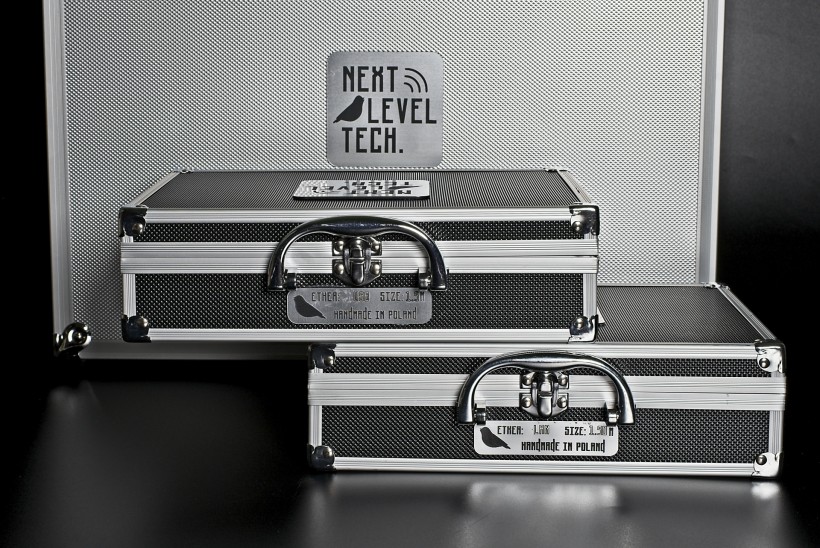
Summary
As I see it, with the new top-of-the-line ETHER series, Next Level Tech broke off with the Hijiri Million as a reference and took a new direction. Direction towards (almost) ultimate clarity, transparency, and precision. Therefore, it is a bit more analytical, more ‘audiophile’, definitely more revealing, and tonally neutral, but also a more resolving series. What it means in practical terms is that (objectively, as much so as it is possible within such a subjective area as sound quality) it is even better than the excellent Flame, a true high-end line you can compare to many, even significantly more expensive products, and the result won’t be predetermined.
It also means that it will reveal the true nature of the components that you connect using the individual Ether cables. Will you like what you hear? I don’t know. In some cases, when cables stop masking it, you may find out that these components are not quite as flawless as you thought. Is it a bad thing? No! It will help you to build an even better set and then to reveal its full potential. As for me, when discussing my impressions with Mr. Słowiński, I mentioned that for personal use, I’d prefer Flame because it is more forgiving of flawed recordings (to a certain extent!). As a reviewer, I definitely appreciated the Ether line more as it made my life easier when assessing other components. The choice is up to you. I decided to add the Ether XLR IC to my reviewer’s arsenal, which is quite telling.
Prices (when reviewed):
- Next Level Tech Ether XLR IC: 3124 EUR / 1m
- Next Level Tech Ether SC: 4010 EUR / 2m
- Next Level Tech Ether USB: 870 EUR / 1m
- Next Level Tech Ether LAN: 798 EUR / 1m
Manufacturer: NEXT LEVEL TECH
Associated equipment:
- Digital source: a custom passive server with WIN10, Roon, Fidelizer Pro 7.10, JCAT NET XE, and JCAT USB XE cards with FERRUM HYPSOS Signature power supply, KECES P8 (mono) linear power supply for the server, JCAT USB Isolator
- D/A Converter: LampizatOr Poseidon +Ideon Audio 3R Master Time (USB signal regenerator)
- Analog front end: J.Sikora Standard MAX turntable, J.Sikora KV12 & J.Sikora KV12 MAX tonearms, AirTight PC-3, Audio Technica PTG33 Prestige & LE SON LS10 MKII cartridges, Grandinote Celio MK IV & ESE Lab Nibiru V 5 phono stages.
- Power amplifiers: GrandiNote Shinai, Circle Labs M200, Art Audio Symphony II (modified)
- Preamplifier: Circle Labs P300
- Loudspeakers: GrandiNote MACH4, Ubiq Audio Model ONE Duelund Edition.
- Interconnects: Bastanis Imperial x2, Soyaton Benchmark, Hijiri Million Kiwami, Hijiri HCI-20, TelluriumQ Ultra Black, KBL Sound Himalaya 2 XLR, David Laboga Expression Emerald USB, David Laboga Digital Sound Wave Sapphire Ethernet
- Speaker cables: Soyaton Benchmark Mk2, WK Audio TheRAY Exclusive
- Power cables: DL Custom Audio 3D-S-AC Connect, LessLoss DFPC Signature, Gigawatt LC-3
- Power: Gigawatt PF-2 MK2 and Gigawatt PC-3 SE Evo+; a custom power line with Gigawatt LC-Y in-wall cable; Gigawatt G-044 Schuko and Furutech FT-SWS-D (R)
- Network: Silent Angel Bonn N8 + Silent Angel Forester F1 + optical LAN isolator
- Racks: Base VI, Rogoz Audio 3RP3/BBS
- Anti-vibration accessories: ROGOZ-AUDIO SMO40 and CPPB16 platforms and ROGOZ AUDIO BW40MKII feet, OMEX Symphony 3S, Franc Accessories Ceramic Disc Slim Feet and Wood Block Platform, Graphite Audio CIS-35 and IC-35 Premium


